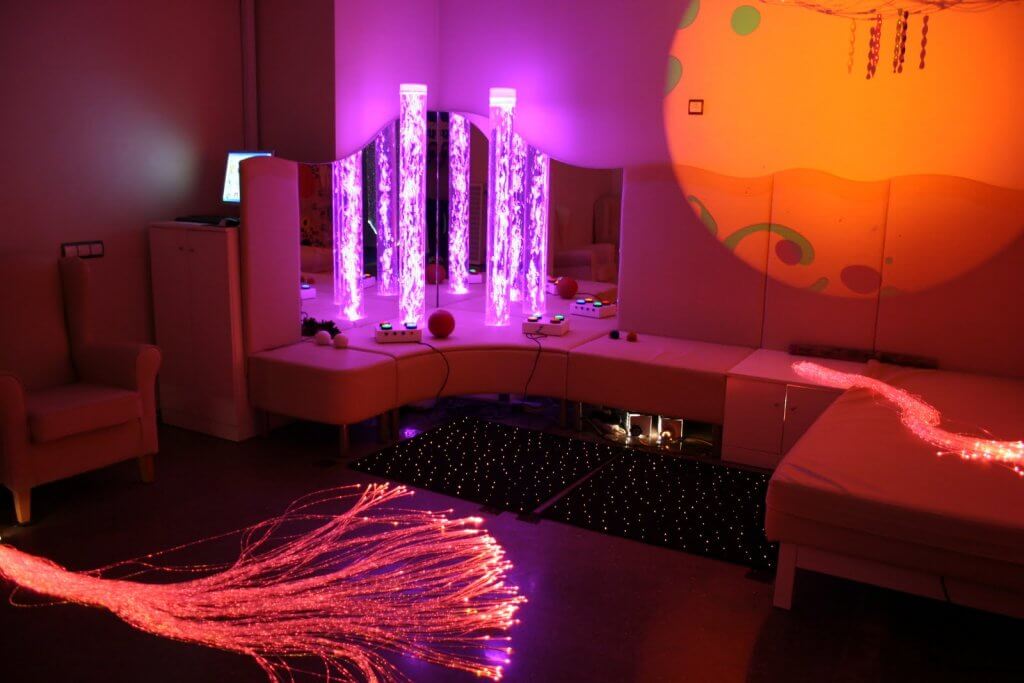You may have heard of Snoezelen multisensory stimulation rooms, in this article we will describe the origin and roots of this particular type of piece, before explaining how it can benefit us.
The term Snoezelen has its origin in the union of two Dutch words, on the one hand we have Snoffelen, which means feeling, and on the other, Doezelen, whose translation would be something like relaxing or taking a nap. an association of two actions that seem different from each other, something like relaxation through stimulation. Discover and enjoy the pleasant part of stimulating our senses.
- The concept of Snoezelen arises in the same way that great ideas and their execution are born.
- Arise in the face of the need to act.
- In the face of inertia and inaction in a certain aspect of life.
- This idea arises from the frustration of seeing how the intervention was performed in people with different developmental disorders and who did not achieve the desired results.
The intervention did not go beyond simple assistance work. However, Ad Verheul and Jan Hulsegge, the parents of this revolutionary concept, did not stop there. They created this new way of working with a certain type of population that we will now discuss.
Because, of course, there is a part of the population for which these types of therapies are especially beneficial, especially we are talking about people whose ability to relate to the environment is very low because of the limitations imposed by the disorder they suffer. People with special needs, dementia and autism are the disorders that have the most positive impacts with this method.
Stimulating some people through different sensory channels can help them, this stimulation, supervised and controlled by a professional, will generate new responses in the person, basic responses that would not otherwise appear.
In this sense, it is necessary to know the case of the person before starting to work with them, each person is absolutely unique and different from the others, how you work with each one will depend on the idiosyncrasies of your particular case.
Professionals need to get to know their patients very well to get the most out of this new mode of intervention. There are people who need to “wake up. ” People who have suffered, for example, a brain injury that has completely disconnected them from the world around them.
This procedure is also useful for people who remain connected to the world around them, as they pay attention to this world, but are unable to communicate with their environment, these people will benefit greatly from this therapy. is asleep, stimulation will work and new neural connections will be created.
Therefore, it is essential to carry out an individualized and detailed monitoring of the person, since we can perceive the imperceptible. The clinical eye must be quick, precise, and educated about the problem it is examining, without the smallest detail escaping.
We need to realize what the patient likes. Which one is good for him?It’s hard work that requires a lot of observation. A kind and profound observation of our patient.
Therefore, multisensory stimulation rooms must be fully equipped to carry out this therapeutic practice, in addition, the material must be prepared and adapted to create this type of sensory experience, experiences that involve all our senses. Vision, smell, touch, hearing and taste, we will seek to create a human environment. An environment in which trust, respect and attention to the person are present.
This place will be a nice place, a special and unique retreat. A space full of harmony and warmth that will undoubtedly penetrate the person’s skin and, in some way, settle inside. Equally pleasant and beautiful songs penetrate our minds and reach the soul.

